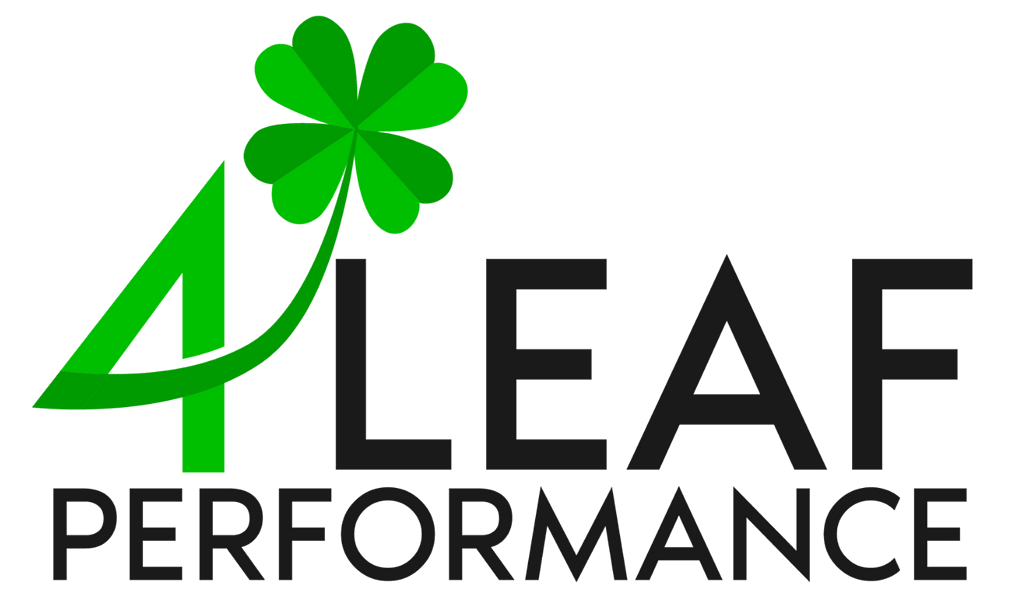Corporate restructuring strategies are necessities for steering companies towards greater efficiency and resilience in the face of market challenges. Two of our seasoned coaches, Andrew Lamb and Luke Dillon, share a conversation about this topic. Their insights, drawn from extensive experience in corporate reorganization, serve as a useful guide for businesses navigating the complexities of restructuring.
Top Corporate Restructuring Strategies to Optimize Your Team’s Efficiency
Step into a pivotal conversation with Andrew Lamb and Luke Dillon as they navigate the turbulent waters of corporate restructuring. They confront the daunting challenge many organizations face: adapting to rapid market changes without losing their core essence. This dialogue sheds light on the criticality of evolving with agility, ensuring your team not only survives but thrives amidst the inevitable shifts in the business landscape.Understanding the Basics of Corporate Restructuring
Key Elements of Successful Business Restructuring
The blueprint for success is not just about altering structures and processes; it’s fundamentally about nurturing a culture, setting clear goals, and fostering communication. Andrew Lamb states that effective company reorganization relies on three elements: a team culture that embraces change, clear objectives, and unwavering communication.
Luke Dillon: What are the key elements that define successful business restructuring, and how do they directly impact team efficiency?
Andrew Lamb: One, team culture that embraces change. Two, clear objectives. Effective communication and employee involvement. So, I think those are the main elements that you’ve got to look at when you’re trying to look at successful restructuring.
Team culture that embraces change. How is that team enabled? Do we have the right team members in the organization that embraces change?
What are the clear objectives that the organization has that they’re moving to? …go with the end in mind. What is the end goal we’re looking for?
Communicate, and when you’re finished communicate again.
Signals for Restructuring and Common Triggers
Recognizing the signals for restructuring is like reading the vital signs of a business’s health and market position. Andrew shares unmistakable indicators for business to start considering the restructuring process.
Luke Dillon: What signals the need for a small business to initiate the restructuring process? When is the right time?
Andrew Lamb: The right time depends upon the organization, but just a rule of thumb: declining profits, changes in the market and organizational efficiencies. So, the numbers will tell you if you need to make a change. The market will tell you if you need to make a change and, I think the organizational activities, what’s going on will indicate that changes need to be made within the organization.
So the key indicators: profits, revenue, cost, market changes, and then organizational inefficiencies.
Implementing Corporate Restructuring Strategies
Impact on Small vs. Large Businesses
When it comes to corporate restructuring, the size of a business plays a significant role in how changes are implemented and felt across the organization. Whether a business is large or small, the principles of restructuring remain consistent, but the scale of change and its impact can vary greatly.
Andrew Lamb: Smaller organizations have smaller teams, but the general rule of thumb is the same, right? Scale of change: how much change do you want to incur, how much change are you going to drive, the resources that are available, and then the impact on the organizational culture.
I would say culture is one of the things that a lot of organizations don’t think about. It is a powerful dynamic within an organization… the culture that you have. So for a small business, for example, and using project management, time, team resources, right?
The scale of change may be large for a small company, but it may be minuscule for a large company, and vice versa. Larger companies have a lot more resources, smaller companies don’t, but, how do you get creative with the use of those resources, right? Do we bring people in? Do we bring specializations in to overcome those quickly? Then understanding what is it going to be that impacts the team, on the culture.
Proactive Preparation for Restructuring
Getting ready for restructuring before things get tough is like preparing for a storm. Andrew shares some practical advice on how businesses can stay ahead of the curve.
Luke Dillon: How can a business proactively prepare for restructuring before these signals become critical?
Andrew Lamb: So, my honest opinion on this one is don’t wait for it. Strategic planning: you’ve got to strategically plan, spend time strategically planning every year, do your SWOT analysis, do your competitive analysis, look at where the markets are going, what’s the trends? Look at some of those leading indicators that are out there.
Strategically plan your organization. It doesn’t matter what size it is. Strategically plan and be intentional with that, intentionally strategically plan for where you’re moving towards.
And you’ve got to be looking at regular reviews. Reviewing your business, reviewing your customers, reviewing your team being clinical about that. Understanding what are the KPIs, the numbers…where is everything going?
And then how do you become flexible in your operation? In today’s dynamic world, and it doesn’t matter what industry you’re in, you’ve got to be flexible. You’ve got to be able to meet the market demand of where the market is going.
Those are the three key points: strategic planning, regular reviews, and then being flexible within the organization.

Choosing the Right Corporate Restructuring Strategies
When a business decides it’s time to restructure, choosing the right strategy is crucial. Luke and Andrew discuss the pros and cons of different restructuring models, such as downsizing, reorganization, mergers, and acquisitions. The decision often hinges on balancing cost savings with morale impact, focusing on improvement versus dealing with disruption, and aiming for market expansion while managing integration challenges.
Luke Dillon: Now you’ve reached that point and you’ve decided you need to restructure. What are the advantages and disadvantages then of the different restructuring systems or models that are available, whether those be downsizing, a reorganization, a merger, and acquisition. How do you then decide on which is the best path and is that based on the size of a business?
Andrew Lamb: Cost savings versus morale impact, improved focus versus disruption, market expansion versus integration challenges.
So, as we look at cost savings and morale impact. When organizations go through reorganization cost-saving measures, what is the first thing that gets into everybody’s head? I’ve lost my job. So, understanding and being surgical with regards to what you’re doing, being very clear on what are you doing and why are you doing it, and the impacts are crucial. So there are advantages and disadvantages in both of those.
If we’re looking at improving the focus versus disruption, be very surgical in what are you focused on. Where are you going towards versus all the other disruptions that will go on in that change.
One of the things that we’ve used in the past is having tighter teams that are very focused in the specific area that you’re working in and not allowing those disruptions into that environment so that they are focused, they’re coming up with a plan. This is what we’re going to do, and having very clear communications of what does that mean and where does that take the organization.
And then market expansion versus integration challenges. So, if you’re making a change or restructuring a model, going after a different market, expanding the market, what does that do internally? Does that disrupt what’s currently going on? Do you set a team, an organization, that focuses just on that piece of work? So that you can focus on that, you can work out the kinks in it, and then within that, then you absorb it into the main operation. What are the learnings from that? How do you take that and then bring that back into the operation?
Optimizing Team Efficiency through Restructuring
Optimizing team efficiency through restructuring is like setting up a roadmap for a journey; you need to know your destination before you start. Andrew Lamb shares a valuable piece of advice borrowed from Stephen Covey: “Start with the end in mind.” This approach is about having a clear vision of what you want to achieve at the end of the restructuring process.
Luke Dillon: What is the best restructuring strategy to optimize team efficiency, and why do you believe that is the best strategy?
Andrew Lamb: Okay. I’m going to steal this from Mr. Stephen Covey. Start with the end in mind. In any project, in any exercise, what is the end goal you’re trying to get to? Let’s start with the end in mind. Then you’ve got to look at what strategy are we going to use.
What’s the rationale? What are we going to do? Is this something that’s never been done before? Is there something we can learn from other initiatives that have been done before? Where are you going? Has it been done before? What was the learnings from that? What’s the best use cases? And how is this going to impact the efficiency? How is this going to impact the team?
When you’re building a team to do this, and you’re doing this restructuring, who is the team that you want to put in place to work through this?
Start with the end in mind and figure out where you want to go. What is the strategy you want to deploy? Look for some use cases out in the marketplace that have already gone through these steps, gone through this work, and then have the right people on the team to drive it forward.
Measuring the Success of Restructuring
To figure out if a restructuring strategy is really working, especially in making a team more efficient, Andrew Lamb points to several clear signs to watch for.
Luke Dillon: What metrics or indicators are most effective in assessing the restructuring strategy and its success in terms of the team’s efficiency?
Andrew Lamb: Employee productivity. Indicators, measurements, how productive are the employees now versus where they’re going to be.
Operational costs. Are we improving the operational costs of the business? If it’s taking us 20 percent of COGS today, how do we get that down to 15 percent of COGS?
Revenue increases. Is this strategy going to get us into new markets? Is it going to give us new revenue streams? Is it going to give us more profitable revenue streams? How are we bringing new products and services to market quicker, faster, better?
Team collaboration. How are we improving employee satisfaction? How we improving customer satisfaction? All of these are great key indicators to assess whether the strategy is going to be a success, whether the team is engaged, and it’s working for the team. Because remember the team are the people that are going to deploy the strategies and get the results for you. So, team has got to be a significant part of the KPIs or the knowledge that we’re bringing into to these changes.
Tools for Successful Corporate Restructuring Strategies
Andrew Lamb: So, when you’re looking at a business and you’re looking to acquire a business, what is the company culture that you have? What is the company culture that the person that you’re acquiring has? And how are you going to blend those cultures together? Where do you move towards?
I would look at the culture that you’re buying into. In the past, I did a merger with one organization that had a clearly different culture from the culture that we had. That merger was a flaming disaster because the cultures were so different. Look at case studies. Learn from what’s happened before. Bring experts in that could help you overcome this.
How much time does it take you to learn those team members? They may have worked in this organization for 10 years, but you’ve now got to work with them tomorrow. You don’t have 10 years to learn who they are. So, one of the things that we’re deploying right now in acquisitions very successfully is the WHY.os. Learn the people that are coming into your team better than they know themselves- who they are.
Spend time learning who those people are at the deepest level. And then, from that, you can start to support and engage the people. You’ve got to get the people on board internally.
Challenges and Solutions in Restructuring
Leadership’s Role in Minimizing Disruption
When a big company talks about restructuring, it’s common for employees to worry and wonder if their jobs are safe.The key to calming those fears and keeping the team together is clear and open communication.

Luke Dillon: As an employee in a big corporation, you hear the word restructure and everyone runs or panics. How do you prevent that shudder and losing good people because they don’t know what’s happening? What’s the one thing that a leader can do to prevent that?
Andrew Lamb: First of all, communicate. What’s the strategy, what’s the goal, what’s the North Star? Where are we going? Be very clear on that. Crystal clear on that. Then, go get the right people in the organization. Put them in the right roles and then get the hell out of the way. That’s Richard Branson’s strategy.
Part of your job as somebody that’s leading transformation is to articulate where we’re going, the outcomes, the impacts, what needs to be done, and what is the end result of that. And then having that communication that’s digestible and easily digestible by everybody so everybody can get on board to move the business forward.
And that is where I believe leaders forget that they’ve got to create the vision. They’ve got to create the direction. They’ve got to inspire people to follow them down the path of where they’re going. And once they do, then we get to the North Star. Then we get to a business that’s flourishing and driving, and it just becomes dynamic, and it’s exciting to be back in again. People will go through the trenches with you and go through those train tunnels. They will all go through those with you if you clearly articulate where you’re going and the outcome.
Pros and Cons of Restructuring in the Current Economic Climate
In today’s unpredictable economic environment, the decision to restructure a business comes with its own set of challenges and opportunities.
Luke Dillon: What are the most significant pros and cons of undertaking a business restructuring in the current economic climate?
Andrew Lamb: Let’s do the cons: People lose focus. We start restructuring, people lose focus. Everybody loses focus in a way that everything’s bad, right? We lose focus on our jobs. We lose focus on where we’re going.
Cost. The cost of doing this, the cost of losing customers, the cost of doing the extra work. There’s a cost to restructuring. And then the other cost is the cost of morale if not done right.
Now, let’s look at the positives: businesses become more agile. It’s about meeting the market. How do we become more profitable? Profit comes from two areas, which is managing your costs and also increasing your revenues.
And then, team engagement. Through restructuring, it gives us the opportunity to re-look at the bus, right? And I use this analogy all the time. But what is the bus that we’re creating? What’s the journey we’re going on? Who are the people in the right seats on that bus that we need to move forward with? So, when we’re doing restructuring, we’ve got to look. Do we have the right people to move the business forward to the next level that we’re looking for?
As you grow, some people won’t grow with you. Some people won’t fit that seat that you need to fill going forward. That’s okay. This is an opportunity to get the right people in the right seats to move the bus going forward.
Common Challenges and Strategies for Effective Communication
During business restructuring, companies often run into a few sticky situations that can throw a wrench in the works. Andrew Lamb points out the top three hurdles: employee resistance, communication breakdowns, and misaligned goals.
Luke Dillon: What are the common challenges faced during a business restructuring, and how can they be addressed?
Andrew Lamb: Common challenges: employee resistance, communication breakdown, and misaligned goals. Top three all the time.
So let’s dig into that a little bit. Employee resistance. Employees don’t like change. Teams don’t like change. So, getting over that change, getting over that resistance is one of the big things, one of the big challenges.
Communication breakdown. Not communicating effectively. Active listening skills get thrown out of the room when we’re having conversations like that. So, active listening skills and employee growth mindsets are the things that we’ve gotta instill in our teams as we move forward.
And misaligned goals. We’ve got to go with the end in mind. We’ve gotta set the north star where we’re going, and what does that mean to everybody? That’s the job of the leader. When we’re looking at this, make sure we overcome employee resistance, we don’t have communication breakdowns, and we’re not misaligned on goals because those are the key challenges of any transformation.
Overcoming Challenges in Corporate Restructuring Strategies

Tackling the hurdles of corporate restructuring requires a thoughtful approach to communication. Andrew Lamb highlights three key strategies to minimize resistance and foster a supportive environment: transparent communications, employee involvement, and consistent messaging.
Luke Dillon: Can you discuss strategies for communicating changes to employees in a way that minimizes resistance?
Andrew Lamb: My three bullet points on this: transparent communications, employee involvement, and consistent messaging.
Being transparent is absolutely key. People will talk, people will come up with their own version of the truth. So, if you allow their versions of the truth to get around it’s because you’re not engaging the team in transparent communications. Be honest with people. People appreciate honesty. People appreciate transparency. Be as transparent as possible.
Employee engagement. I’ve been on some fantastic projects where there’s massive team involvement, collectives that came in to solve problems, and giving them the time and energy and efforts and tools to help through that process. Make sure you’ve got involvement. Make sure that people have a way to communicate and bring in their ideas and their thoughts and concerns.
I’ll give you a quick example on that. We did a merger and acquisition, and they had an FAQ space that people could go and look for information but also ask questions and every question that was asked was treated as an opportunity, was treated as engagement, and it was always supported, and people were rewarded for asking questions.
So, that involvement, that engagement drove a passion to move this project forward. It’s actually one of the most successful ones that we did. Having that involvement, having that engagement, was really crucial.
Consistent messaging. As I talk to business owners that are acquiring businesses today. I tell them, when you’re taking over a business, you’ve got to communicate, communicate, and when you think you’ve over communicated, communicate again. You’ve got 17 touch points for people to understand what you’re doing and where you’re going. 17. It’s not one meeting. It’s one, not one, discussion. It’s 17.
Elevate Your Restructuring Journey with Expert Coaching
Ready to navigate the complexities of corporate restructuring with confidence? At 4 Leaf Performance, we understand the challenges and opportunities that come with change. Our expert executive coaching services are designed to guide you through every step of the restructuring process, from strategic planning to effective communication and team optimization.
Don’t let the uncertainties of restructuring hold your business back. Join the ranks of successful companies that have transformed challenges into opportunities with 4 Leaf Performance. Whether you’re looking to enhance team efficiency, align your strategies with your goals, or foster a culture of resilience and innovation, our coaches are here to support you.
Take the first step towards a more agile and dynamic future. Contact 4 Leaf Performance today to learn how our tailored coaching services can empower your business to thrive in times of change. Let’s build a successful tomorrow, together.



